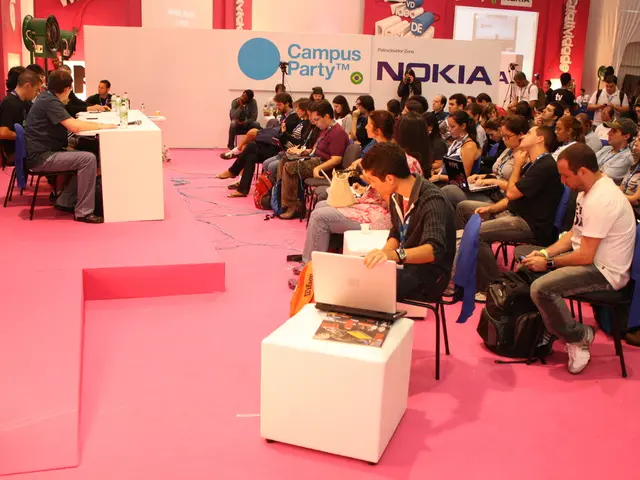Exploring the Fascinating Realm of Random Number Creation in Lottery Contests
==================================================================
In the world of lotteries, the landscape is rapidly evolving with advancing technology. Today's lottery organisations generate random numbers impartially through two main types of systems: mechanical and electronic random number generators (RNGs).
Mechanical RNG Systems (Physical Drawings)
Traditional lotteries often use mechanical devices such as drawing machines with numbered ping pong balls or similar physical objects. These mechanical methods exploit inherent physical randomness, making each drawing outcome unpredictable and unbiased by design. For example, numbered balls are mixed thoroughly in a transparent machine and drawn randomly, ensuring a physically verifiable random process free from algorithmic manipulation.
Electronic RNG Systems
Electronic RNG methods can be categorized into two types: True Random Number Generators (TRNGs) and Pseudo-Random Number Generators (PRNGs).
- True Random Number Generators (TRNGs): These use physical phenomena such as atmospheric noise, radioactive decay, or other environmental measures to generate randomness. They are hardware-based devices that measure inherently unpredictable environmental variables to produce genuinely random outputs. For lotteries, this can mean capturing real-world unpredictable data as a seed source.
- Pseudo-Random Number Generators (PRNGs): These rely on deterministic algorithms seeded by initial values (seeds) to generate long sequences of numbers that appear random. While computationally efficient and fast, PRNGs are theoretically predictable if the seed and algorithm are known, so for critical lottery applications, additional safeguards or hybrid systems combining TRNG elements help ensure impartiality.
Ensuring Impartiality and Transparency
To maintain fairness and prevent manipulation, modern lotteries employ several measures. Mechanical drawings are conducted publicly with transparent equipment, witnessed by independent auditors. Electronic RNGs undergo rigorous certification by independent testing organizations that verify the hardware/software complies with randomness standards, ensuring no bias or predictability. Many modern lotteries combine both methods or use hybrid RNG setups to increase confidence in randomness and reduce vulnerability to any system-specific flaws. Lottery systems also implement cryptographic seals, tamper-evident packaging, and real-time monitoring to reinforce integrity.
The excitement and unpredictability of lottery draws contribute to the overall thrill of the experience. Playing the lottery has become more accessible due to the advent of technology, with online platforms and mobile applications transforming how people engage with lottery games. The future of lottery games could connect people with like-minded individuals from around the world, fostering friendships rooted in shared experiences and dreams.
Winning or losing in the lottery doesn't necessarily define the overall experience; the journey is often as valuable as the outcome. The hope and anticipation of winning can lead to introspection and life lessons, while playing the lottery can foster personal growth and camaraderie among participants. The science of RNG continues to inspire appreciation for the thrill of the unknown, and the future holds the potential for new and exciting stories in lottery draws.
For further reading, please visit i539.tw, and for a broader understanding, check out the Official site.
References:
- SoftSwiss
- Dataconomy
- In the realm of casino-and-gambling, including casino-games and lotteries, technology is revolutionizing automation and system designs, making them smarter and more transparent.
- The advent of AI and algorithms is set to bring smart glass solutions to the forefront, offering innovative and engaging ways to interact with casino-games and lotteries.
- To stay ahead in an evolving market, lottery solutions are integrating cutting-edge technology, combining traditional mechanical RNG systems with modern electronic RNGs for unbiased, impartial, and verifiable randomness.
- As various systems undergo rigorous testing for randomness adherence and transparency, the partnership between technology, automation, and lotteries promises new levels of integrity and excitement in the irresistible world of casino-and-gambling.
- In a connected and globalized era, lottery organizations are leveraging the internet and mobile applications, fostering a world where players from diverse backgrounds can share their dreams and experiences in lotteries and casino-games, contributing to a vibrant and thriving community.








